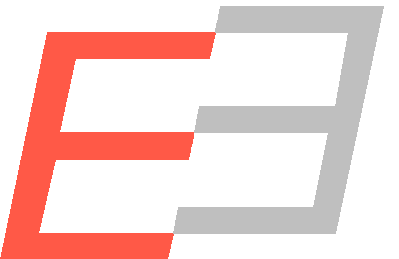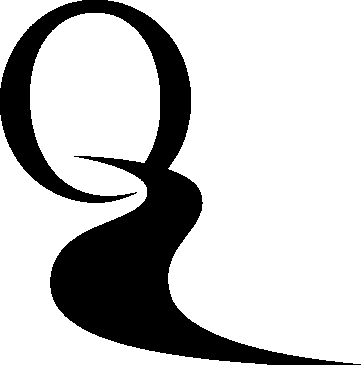VPLIV BESEDILA NA RAZUMEVANJE SLIK
Sažetak
The understanding, retention and recollection of learning materials depends on complex interactions between the cognitive and motivational characteristics of the recipient, in particular his/her knowledge, learning strategies and standpoints on the one hand, and, on the other, the way information is presented in the learning material, e.g. type of content, organisation and sequence. Integrative processing depends on formal characteristics of the text or picture, which more or less speed up the processes of connecting information from both sources. This involves the question of the structural complementarity of the learning material. Some organisational parts of the text, for example headings, abstracts and picture captions, may direct the reader’s attention to the pictures. We talk about structural complementarity when, for example, a picture or a sentence is used to direct the reader’s attention to a scheme that allows him/her to understand the content of the other medium. One of the main conditions of integrative processing is therefore an explicit direction from one medium to the other, usually from the text as the principal medium to the illustration.
Downloads
##submission.citations##
Pictures. Memory and Cognition, 3. 216-220.
Friedman, A. (1979). Framing pictures: The role of knowledge in automatized encoding
and memory for gist. Journal of Experimental Psychology, 108, 316-355.
Goodale, M.A. & Milner, A.D. (2004). Sight Unseen: An Exploration of Conscious
and Unconscious Vision. Oxford: Oxford University Press.
Hornby, P.A. (1974). Surface Structure and Presupposition. Journal of Verbal Learning
and Verbal Behavior, 13. 530-538.
Jörg, S. & Hörmann, H. (1978). The Influence of General and Specific Verbal Labels on
the Recognition of Labeled and Unlabeled Parts of Pictures. Journal of Verbal
Learning and Verbal Behavior, 17. 445-454.
Katz, E., Blumler, J. G. & Gurevitch, M. (1974). Utilization of mass communication by
the individual. V: J. G. Blumler & E. Katz (Eds.), The Uses of Mass communications:
Current Perspectives on Gratification Research. Beverly Hills: Sage. 19-32.
Lewin, K., Lippitt, R., & White, R. K. (1939). Patterns of aggressive behaviors in
experimentally created social climates. Journal of Social Psychology, 10, 271-
299.
Milner, A.D. & Goodale, M.A. (2006). The Visual Brain in Action, Second Edition.
Oxford: Oxford University Press.
Molitor, S., Ballstaedt, S.-P. & Mandl, H. (1989). Problems in knowledge acquisition
from text and pictures. V: H. Mandl & J.R. Levin (Eds.), Knowledge Acquisition
from
Text and Pictures. Amsterdam: Elsevier (North-Holland). 3-35.
Paivio, A. (1971). Imagery and Verbal Processes. New York: Holt, Rinehart &
Winston.
Paivio, A (1986). Mental representations: a dual coding approach. Oxford: Oxford
University Press.
Rigney, J.W. (1978). Learning strategies: A theoretical perspective. V: H.F. O’Neil
(Ed.), Learning strategies. New York: Academic Press. 165-205.
Rigney, J.W. (1980). Cognitive learning strategies and dualities in information
processing. V: R.E. Snow, R. Federico, & W.E. Montague (Eds.), Aptitude,
learning, and instruction. Hillsdale, NJ: Erlbaum. 315-343.
Schnotz, W. & Kürschner, C. (2007). A Reconsideration of Cognitive Load Theory.
Educational Psychology Review, 19. 401-539.
Salomon, G. (1981). Communication and education: Social and psychological
interactions. Beverly Hills, CA: Sage Publication.
Salomon, G. (1994). Interaction of media, cognition, and learning. Hillsdale,
NJ:Erlbaum.
Vizjak Pavšič, M. (1993). The Comprehension of Knowledge Bases as a Factor of
Effectiveness of Expert Systems for Decision Support. III Alps-Adria Symposium of
Psychology, Ljubljana, 2-5 June 1993.
Vizjak Pavšič, M. (2006). Razumevanje in reprezentacija znanja. V: T.I. Jerofejeva
(ur.), J. Mojsieva-Guševa (ur.), Ž. Knap (ur.), Filologičeskie zametki. Vyp. 4:
mežvuzovskij sbornik naučnyh trudov. Perm: Permskij gosudarstvennyj
universitet; Skopje: Institut za makedonska literatura; Ljubljana: Univerza v
Ljubljani, 1, 50-59.
Vizjak Pavšič, M. (2007). Pridobivanje znanja iz besedil in slik. V: J. Mojsieva-Guševa
(ur.), Ž. Knap (ur.). Filološki studii. 5. Skopje: Institut za makedonska literatura:
Univerzitet "Sv. Kiril i Metodij", Filološki fakultet "Blaže Koneski"; Perm:
Permskij gosudarstvennyj universitet; Ljubljana: Univerza v Ljubljani, Filozofska
fakulteta; Zagreb: Sveučilište u Zagrebu, Filozofski fakultet, 1, 72-81.
Weidenmann, B. (1989). When good pictures fail: an information-processing approach
to the effect of illustrations. V: H. Mandl & J.R. Levin (Eds.), Knowledge Acquisition
from Text and Pictures. Amsterdam: Elsevier (North-Holland). 157-170.
Zhaoping L. & Guyader N. (2007). Interference with bottom-up feature detection by
higher-level object recognition. Current Biology, 17. 26-31.
Autori predstavljaju časopisu originalne radove temeljene na rezultatima vlastitih istraživanja. Suautori su osobe koje su u značajnoj mjeri doprinijele radu. Autor (i suautori) šalju članak zajedno s popunjenim Prijavnim obrascem (Paper Submission Form) koji ujedno ima svrhu suglasnosti s objavljivanjem rada.
Časopis prima neobjavljene znanstvene radove. Ne primaju se članci koji u velikoj mjeri ponavljaju već objavljene radove autora. U ponavljanja se ubraja kompilacija, odnosno tekst sastavljen od isječaka iz objavljene monografije ili od isječaka iz nekoliko drugih radova. Nedopustivi su plagijati i pretjerano citiranje tuđih radova (trećina ukupnoga opsega članka, ili više). Svi citati, posuđeni ulomci i građa trebaju biti popraćeni uputnicom na izvornik, odnosno na autora i primarni izvor. U slučaju ako je udio tuđeg teksta prevelik, autoru će se preporučiti skraćivanje citata i proširenje opsega originalnoga teksta.
Autor treba dobiti sva potrebna dopuštenja za korištenje posuđene građe (ilustracije i sl.), a za koja on ne posjeduje autorska prava. Autor jamči da članak ne sadrži podatke koji nisu pogodni za javno objavljivanje, između ostaloga i tajne podatke.
Popis literature obuhvaća samo one bibliografske jedinice i poveznice koje su zaista upotrijebljene tijekom istraživanja i koje su u tekstu
Preporuka je da se u tekstu navedu podaci o financijskoj podršci provedenog istraživanja (ako ona postoji). Također se može navesti i zahvala kolegama koji su pripomogli nastanku rada, a koji nisu suautori.
Predajući uredništvu rukopis i Prijavni obrazac autor je službeno dao suglasnost da se njegov rad objavi u časopisu Filološke studije. Autor je i dalje vlasnik autorskih prava članka. Autori imaju pravo povući članak u bilo kojoj fazi njegova razmatranja (do trenutka njegove objave na internetskoj stranici) uz to da trebaju o tome pismeno obavijestiti uredništvo.
Objava članaka je besplatna. Sadržaj je dostupan uz licencu Creative Commons Attribution-Noncommercial-No Derivative Works 3.0 Unported License.










